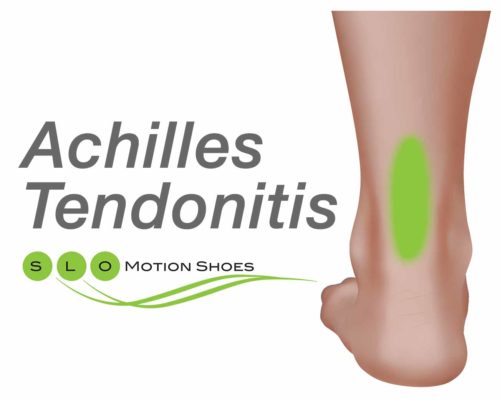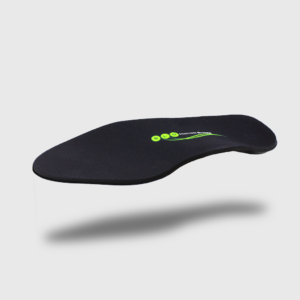The Achilles (uh-KILL-eez) tendon is the band of tissue that connects the calf muscles to your heel bone. This tendon is to lifts the heel has you walk, run, jump and stand on the balls of your feet. Achilles tendonitis is painful inflammation that results from overuse of the Achilles tendon.

Symptoms
Pain and swelling in back of heel while walking or running
Mild ache in back of the leg or above the heel after activity
Severe pain after prolonged or strenuous activity
Tight calf muscle with limited range of motion of the foot
Tenderness or stiffness in the morning which improves with light activity
Causes
Repetitive activity involving lifting the heel off the ground, such as running, walking, jumping
Exercising heavily while in a deconditioned state or suddenly increasing intensity
Overtraining for a specific athletic activity
Tight calf muscles or Achilles tendon
Playing a sport that requires quick stops and changes of direction
Wearing poorly-fitting shoes
Wearing high heels for prolonged periods of time
Rheumatoid arthritis, connective tissue diseases and infection increase the risk
Treatment
Treatment involves reducing biomechanical stresses on the Achilles tendon and decreasing inflammation in the area of injury. Tendonitis usually responds well to self-care measures. If your symptoms are severe and persistent, your doctor may suggest other treatment options.
Eliminate exercise activity that places stress on the Achilles
Focus conditioning on low- or non-impact activity
Wear a shoe with a built-up heel or with a heel lift insert cushion
Gentle stretching of the calf muscle
Ice area after activity or when painful
Physical therapy for specific stretching and strengthening exercises to promote healing and strengthening
Wear a walking cast (CAM boot) to relieve severe pain
Take an over the counter pain medication, such as ibuprofen (Advil, Motrin) or naproxen (Aleve) for a brief time
Use a night splint or rigid boot, to prevent heel movement
The Achilles tendon is a major muscle group that originates in the back of the leg and attaches to the back of the heel bone. The tendons major function is to lift the heel during walking. Overuse of this muscle group can cause inflammation to the tissues surrounding the tendon.
The term overuse does refer to excessive use of this muscle group which could be experienced in any strenuous activity including work out conditions. Tight calve muscles can increase the amount of stress to the tendon during normal walking and in conjunction with overuse can lead to the greater risk of injury. People who are physically de-conditioned experience this condition more frequently.
The “itis” in Achilles Tendonitis refers to an inflammatory process involving the tendon prior to its attachment site. The “watershed” region of the Achilles tendon about three inches above its attachment has limited blood flow and is generally the site of injury. There are different stages of injury to the tendon tissues: Para tendonitis involves the acute inflammation of the vascular lining over the Achilles tendon and is characterized by acute pain to massage and manipulation of the tissues overlying the Watershed region. Tendinosis is characterized by a nodule in the watershed region of injury related to chronic inflammation and scarring of the tendon.
Treatment is aimed at reducing the biomechanical stresses acting on the Achilles tendon as well as decreasing inflammation in the area of injury. For acute inflammation a walking cast (CAM boot) may be required to rest the tendon. Shoes with a heel are one of the most important ways to rest the tendon during normal walking. Heel lifts placed in the shoe also decrease some of the mechanical tendon work during recovery.
Additional treatments including, calf stretching, night splints, physical therapy as well as activity modification are all important contributors in recovery.
Achilles Tendonitis Discussion Board
Select a View
Click on the view that most represents the area of discomfort that you are experiencing. Drag your cursor over your area of concern to obtain a brief description of the potential condition.
Suggested Product
-

Standard Orthotic
$60.00Our standard orthotic. Relieves pain and provides all day support.Select options







